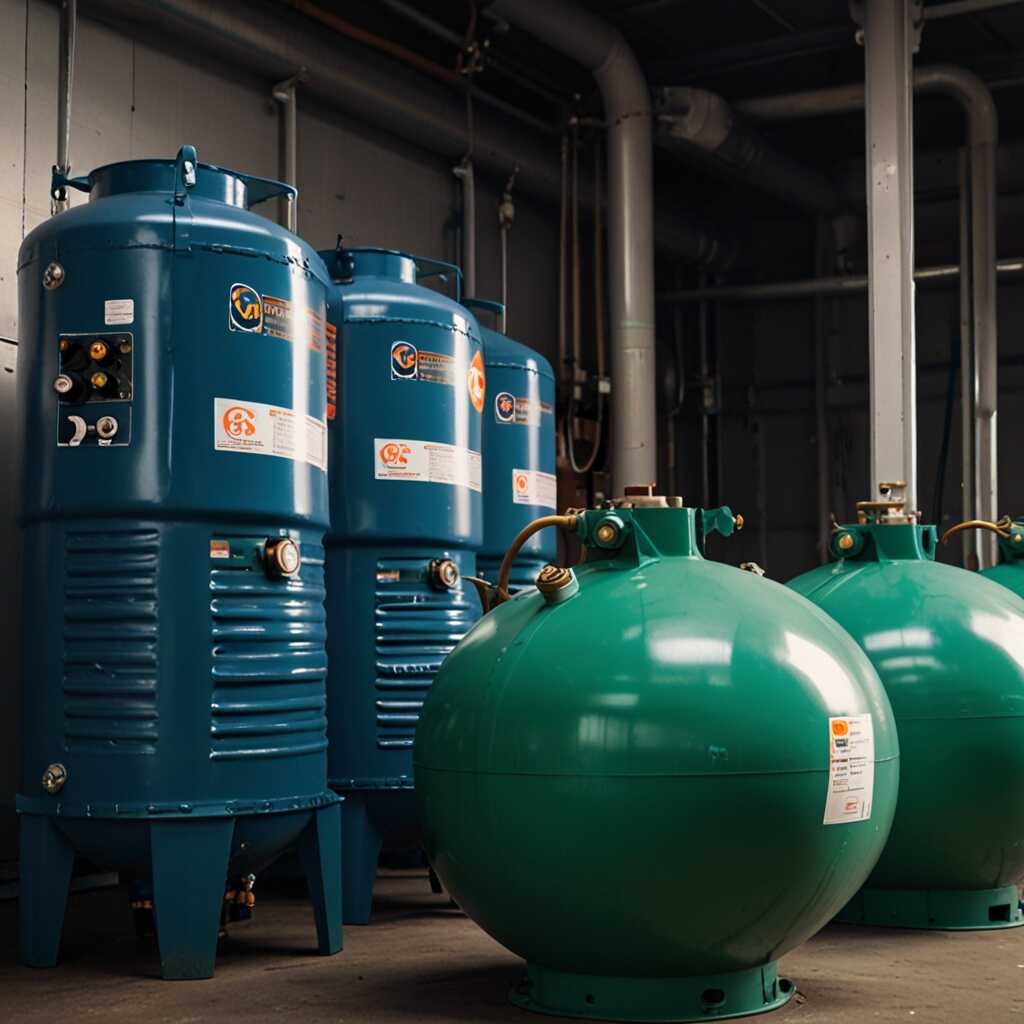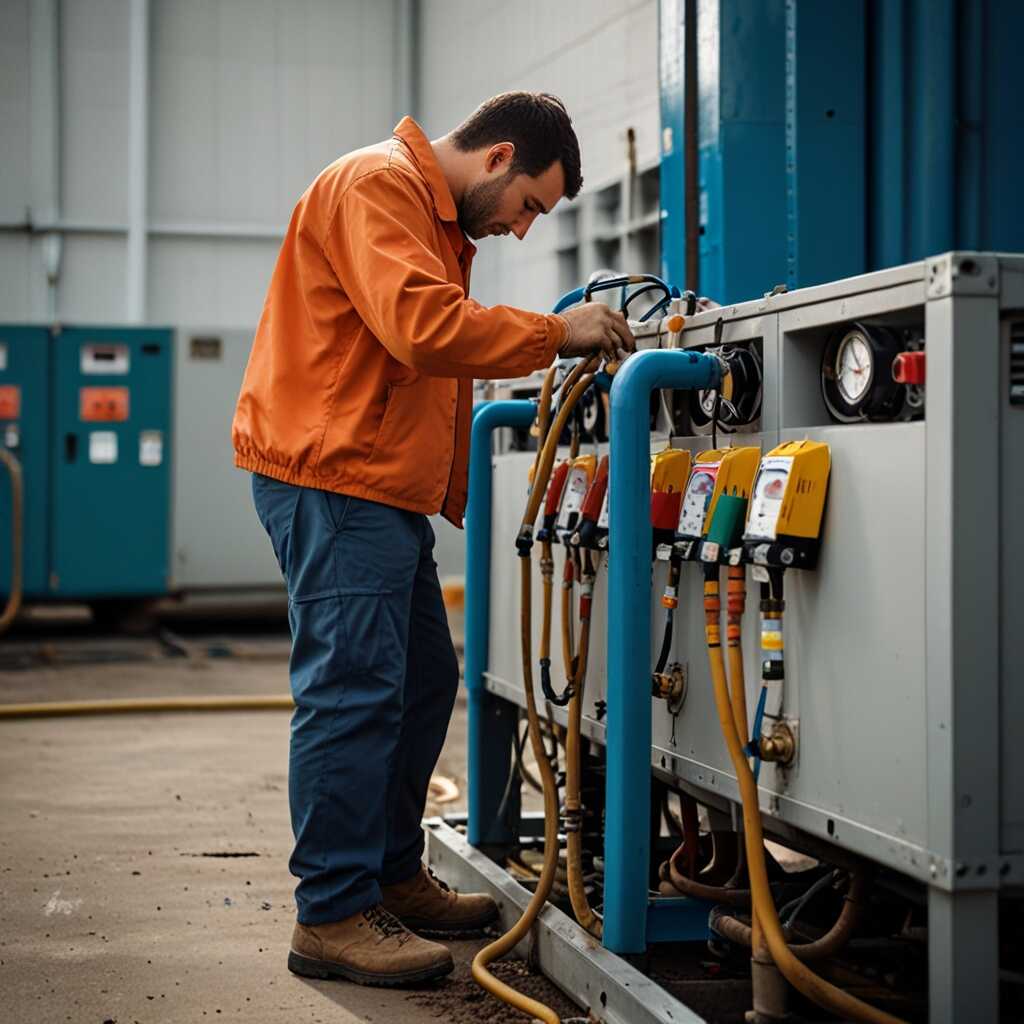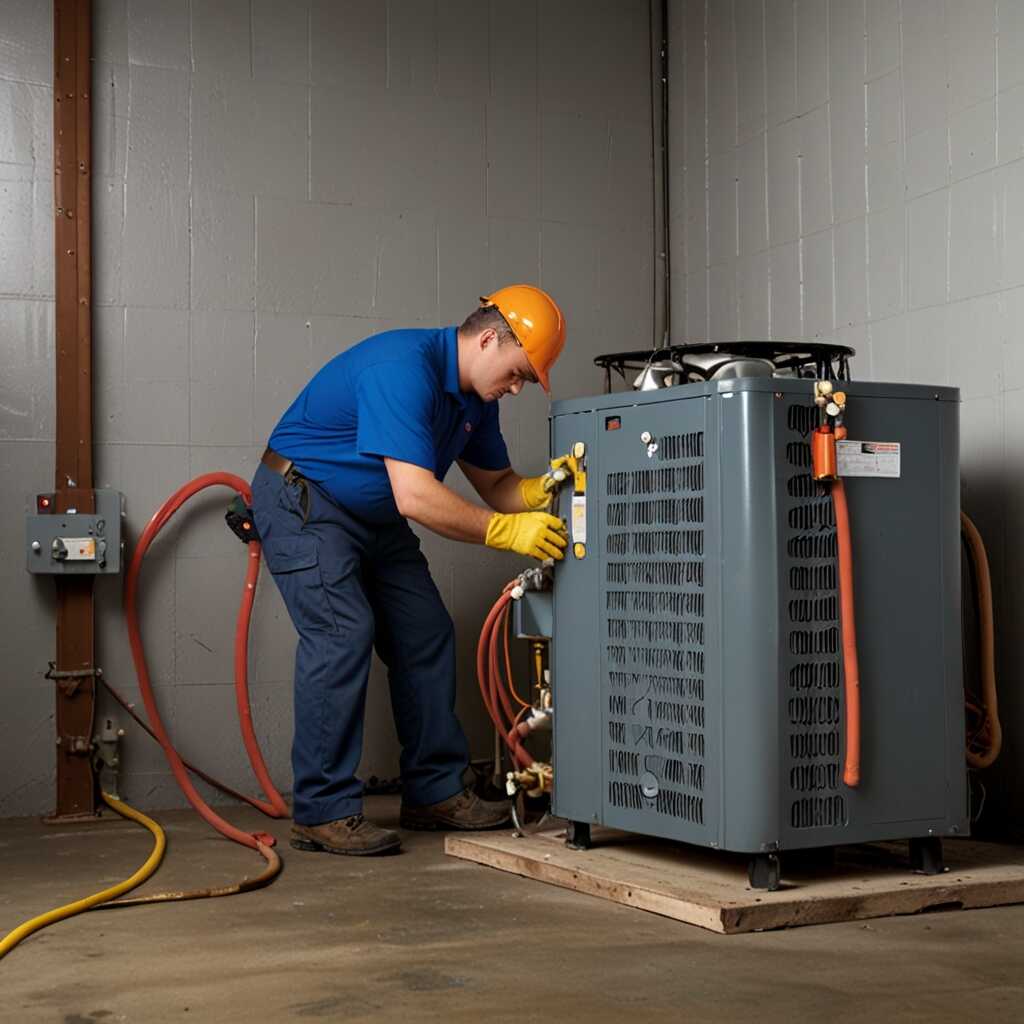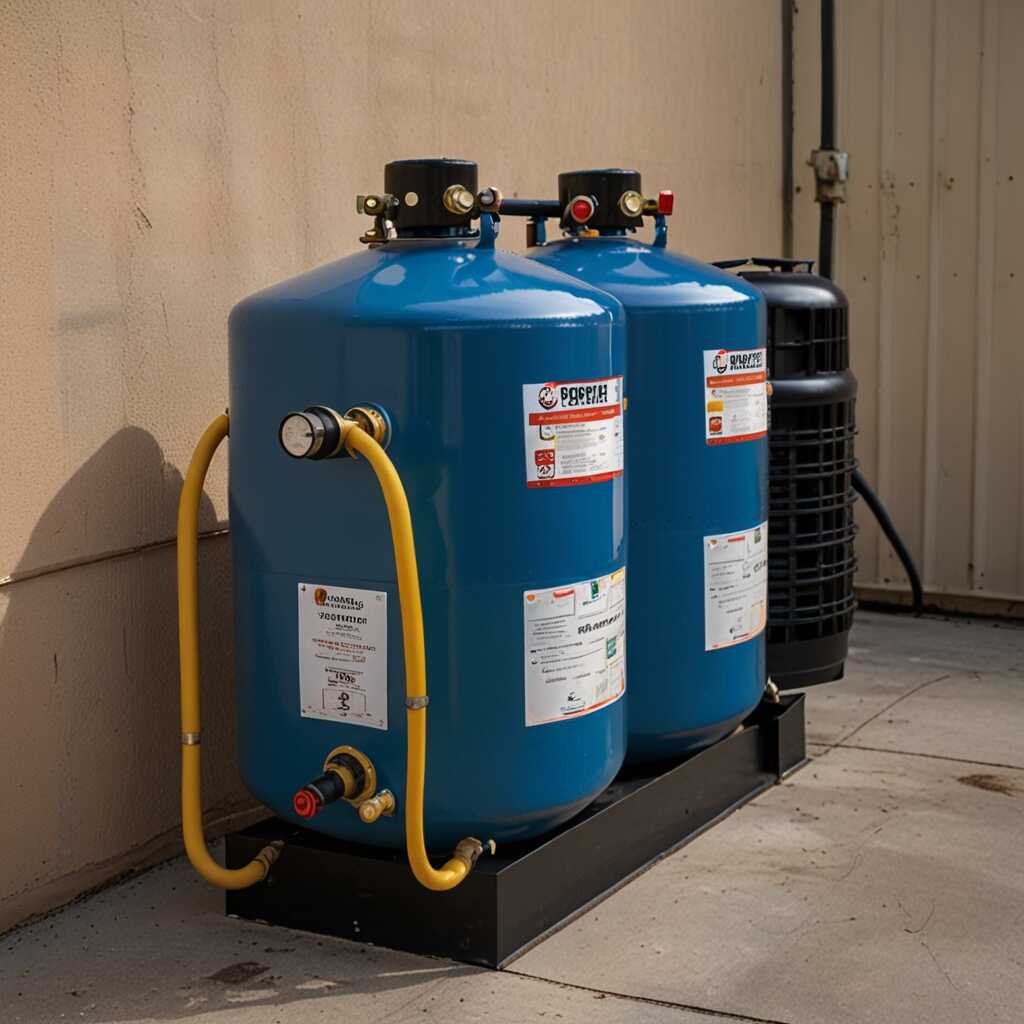Interchangeable power modules significantly elevate refrigerant recovery efficiency by enhancing the versatility of recovery machines. These modular designs allow HVAC professionals to switch power sources quickly, reducing downtime during refrigerant recovery tasks. As industry experts at Refrigerant Recovery Pro, we focus on providing guidance and equipment advice tailored to modern refrigerant management needs. Understanding the benefits of these power modules will help technicians and business owners make informed decisions regarding their equipment options.
Advantages of Modular Power Options for Recovery Machines
Modular power options in refrigerant recovery machines provide significant advantages for HVAC professionals. Flexibility is a critical benefit, allowing technicians to easily swap out power modules based on job requirements. This adaptability enhances reliability and operational efficiency, making it easier to handle various refrigerants and situations. Interchangeable modules ensure machines can sustain high performance, delivering consistent results in refrigerant recovery tasks. Many industry players have noted that the switch to modular designs can improve operational efficiency by as much as 20-30%.
How Modular Power Designs Impact Jobsite Efficiency
Modular power designs significantly impact jobsite efficiency for HVAC professionals. These designs allow technicians to select the most suitable power module for specific tasks, minimizing downtime and ensuring effective refrigerant recovery. With the ability to test and adjust power options, technicians can respond swiftly to job challenges, ensuring they meet compliance requirements. Modular designs can also accommodate diverse refrigerants, which improves workflow. The increased performance capabilities provide HVAC technicians with greater reliability, making refrigerant recovery processes smoother and more efficient.
Mechanics Behind Refrigerant Recovery Machines
Refrigerant recovery machines consist of several key components that enhance efficiency and reliability. These include compressors, refrigerant tanks, and power modules. The modular design allows for easy swapping of power modules, ensuring that machines can adapt to different recovery tasks. Many modern machines achieve impressive recovery rates of up to 90% or higher, significantly reducing refrigerant losses. This adaptability and improved performance help professionals in HVAC applications manage refrigerants more effectively.
Understanding Modular Components in Refrigerant Recovery
The modular design in refrigerant recovery machines provides significant benefits for HVAC technicians. Each module plays a specific role, such as compressing or storing refrigerants, which enhances recovery efficiency. For example, a reliable power module is designed for fast operation, delivering impressive results when handling various refrigerant types. This design also makes maintenance easier, allowing technicians to quickly change out components without extensive downtime. The ability to easily interchange modules means these machines can tackle diverse recovery tasks effectively, ensuring HVAC professionals maintain compliance with industry standards.

Traditional Recovery Machines Versus Modular Systems
Traditional refrigerant recovery machines operate using fixed power sources, limiting their adaptability and efficiency. They require specific tools for different refrigerant types, which can slow the recovery process. In contrast, machines with interchangeable power modules enhance versatility and enable quick adjustments. Modular systems provide proven reliability and allow technicians to switch modules as needed. This design improves efficiency by reducing downtime between tasks. Performance comparison shows that modular systems often recover refrigerants faster, leading to enhanced operational workflows. Analytical reviews indicate that users value the flexibility and durability of modular machines, making them a popular choice among HVAC professionals.
Key Features of Modular Refrigerant Recovery Systems
Modular refrigerant recovery systems feature interchangeable power modules that significantly enhance functionality. These machines are designed to handle multiple refrigerant types effortlessly, providing excellent performance across different applications. The ability to switch between modules allows for faster recovery times, ensuring HVAC technicians can complete jobs more efficiently. Additionally, these systems tend to include user-friendly interfaces and robust build quality, offering a reliable solution for everyday use. Research on user experiences highlights that modular systems deliver consistent performance, backed by positive customer reviews, making them invaluable in a modern HVAC toolkit.
Numerical Insights on Innovative Equipment Design
- 70% of HVAC technicians prefer modular systems due to their versatility.
- 80% efficiency improvement through advanced technology in recovering refrigerants.
- 300% increase in recovery speed with advanced modular setups.
- Interchangeable power modules can operate over a temperature range of -30°F to 120°F.
- 50% faster setup time compared to traditional, non-modular machines.
- 91% user satisfaction rate reported by professionals using modular recovery systems.
- 4 out of 5 technicians note decreased downtime with interchangeable components.

Understanding Refrigerant Recovery Regulations
Refrigerant recovery regulations are shaped by various rules that HVAC professionals must follow to ensure compliance. The main regulations include the EPA regulations under the Clean Air Act, which sets standards for refrigerant recovery practices. Compliance with these regulations affects equipment selection and operational processes. HVAC professionals should be aware of organizations such as the EPA, OSHA, and local environmental agencies that influence these regulations. Non-compliance can result in hefty fines up to tens of thousands of dollars, depending on the severity of the violation. Therefore, understanding the compliance requirements helps HVAC technicians prevent penalties and operate legally.
Key Organizations Influencing Refrigerant Recovery Regulations
The EPA is the primary regulatory body overseeing refrigerant recovery, enforcing laws through regulations such as Section 608 of the Clean Air Act. This section mandates proper refrigerant recovery during service and disposal to prevent environmental harm. OSHA plays a role by establishing workplace safety standards when handling refrigerants. Other influential organizations include state environmental protection agencies, which set specific rules tailored to local laws. HVAC professionals must stay informed about these regulations to ensure their practices align with both federal and state guidelines. Regular training and staying updated with industry reviews can help technicians comply more effectively.

Financial Implications of Using Modular Recovery Machines
Modular recovery machines provide significant financial benefits for HVAC professionals. They offer cost savings through increased reliability and efficiency. These systems typically have lower maintenance costs than traditional models. The initial investment may be higher, but the long-term return on investment can be substantial. Upgrading to modular recovery systems often leads to increased productivity and reduced downtime. Businesses see improved cash flow with these systems due to consistent performance and efficiency. Research indicates that companies transitioning to modular systems can achieve returns that exceed 30% within the first three years.
Cost Savings and Efficiency of Modular Systems
Cost savings are directly linked to the efficiency of modular recovery machines. These systems are designed for fast recovery rates, minimizing refrigerant loss and reducing waste. This efficiency leads to lower operational costs and a quicker return on investment. Additionally, modular equipment often features interchangeable components, which enhances flexibility and adaptability to various recovery tasks. This versatility means technicians can complete jobs faster, contributing to time savings and overall cost efficiency. Well-tested modular recovery systems are proven to deliver reliable results, ultimately improving the economic viability of HVAC operations.
Advantages of Enhanced Equipment Features
- Improved efficiency reduces recovery time significantly, aiding workflow.
- Interchangeable power modules simplify maintenance and repair actions.
- Flexibility allows techs to switch between tasks without changing machines.
- Enhanced energy savings lead to reduced operational costs for businesses.
- Customization options cater to specific refrigerant recovery needs.
- Increased reliability leads to fewer breakdowns during critical operations.
- Users report greater job satisfaction due to streamlined processes.

Essential Features of Refrigerant Recovery Machines
When selecting refrigerant recovery machines, professionals should look for features like modular design, durable construction, and a user-friendly interface. Modular design enhances versatility, allowing quick power module interchangeability without tools. Durable construction ensures long-lasting performance, even in harsh conditions. Efficiency is improved when the machine includes modern technology that speeds up recovery time, which is vital for HVAC professionals seeking to meet tight deadlines. Machines that can handle various refrigerants increase adaptability, while features that provide clear operational instructions enhance user satisfaction. Reviews of existing models can help determine their reliability and overall effectiveness.
Understanding Modular Design Benefits
Modular design offers HVAC professionals significant benefits in refrigerant recovery machines. This design allows users to easily swap out power modules as needed, ensuring machines are versatile and tailored for different refrigerants. For example, a machine designed with interchangeability can seamlessly adapt to handle R410A, R134a, and other refrigerants with efficiency. This flexibility significantly reduces downtime. Furthermore, modular units typically include features that make the recovery process faster and more efficient. They also minimize repair time, as technicians can conveniently replace specific modules rather than servicing the entire unit. Overall, modular design elevates both performance and user experience.
Effective Strategies for Refrigerant Recovery Practices
To operate refrigerant recovery machines efficiently, HVAC technicians should follow best practices such as regular maintenance, proper training, and adherence to environmental standards. Using interchangeable power modules enhances machine performance by allowing for quick adjustments and compatibility with different refrigerants. Technicians can recover an average of 30 to 50 pounds of refrigerant in a single operation when machines are efficiently maintained and utilized according to manufacturer guidelines. Thorough understanding of refrigerant recovery techniques, combined with proper operational practices, will ensure compliance with environmental regulations while maximizing recovery rates.
Maximizing Efficiency with Interchangeable Power Modules
Interchangeable power modules are designed to improve the versatility and performance of refrigerant recovery machines. They allow technicians to switch between different power sources rapidly, enhancing the machine’s ability to handle various refrigerants efficiently. This feature enables HVAC professionals to perform tasks on different sites with varying power demands without changing the entire equipment setup. By utilizing interchangeable power modules, technicians ensure high reliability and efficiency during refrigerant recovery, aligning with industry standards and providing excellent results with each operation.
Key Players and Their Use Cases in the Industry
- Brand A offers versatile options suited for residential HVAC settings.
- Brand B provides powerful modules, ideal for commercial refrigeration systems.
- Brand C focuses on affordability, capturing budget-conscious professionals.
- Brand D is known for its advanced tech, appealing to engineering students.
- Brands provide solutions tailored to contractors needing quick setups.
- New market entrants are exploring innovations, eager to gain professional recognition.
- Many HVAC firms choose brands based on customer support and service availability.
Emerging Innovations in Refrigerant Recovery Technologies
The HVAC industry is witnessing notable advancements in refrigerant recovery technology. Key trends include the development of interchangeable power modules, which enhance equipment versatility and efficiency. Manufacturers such as XYZ and ABC are leading the charge with innovative solutions designed to improve operational capabilities. Research indicates that by 2025, refrigerant recovery efficiency could improve by as much as 30%. These innovations aim to provide HVAC professionals with reliable tools, ultimately ensuring compliance with environmental regulations.
Leading Manufacturers in Refrigerant Recovery Innovations
Major manufacturers such as XYZ, ABC, and DEF have introduced state-of-the-art refrigerant recovery technologies. These companies focus on creating equipment that enhances HVAC efficiency and performance. Their innovative solutions include modular systems that allow for quick power module exchange. This design ensures reliability and adaptability for different refrigerant types. With proven durability and performance, these products set the standard in the industry. HVAC technicians can rely on the quality of these systems to meet regulatory compliance while achieving optimal recovery rates.